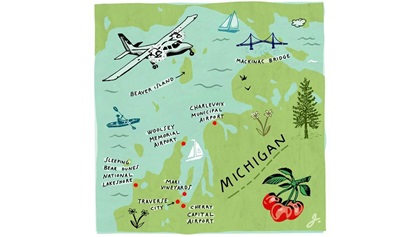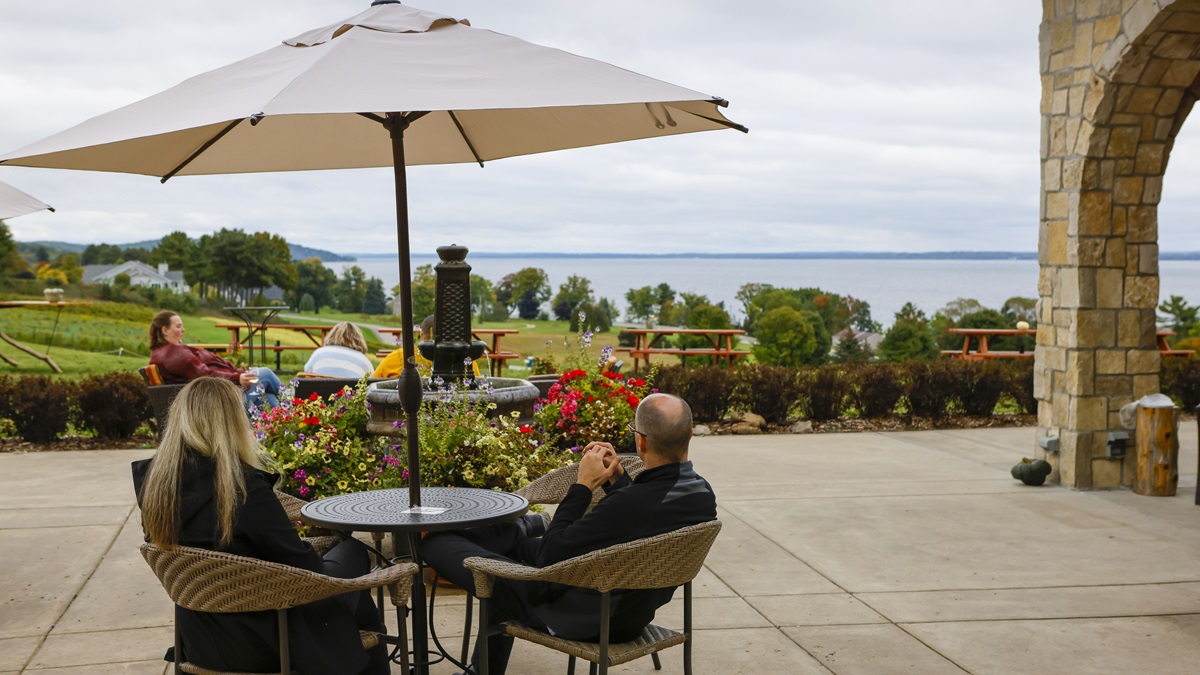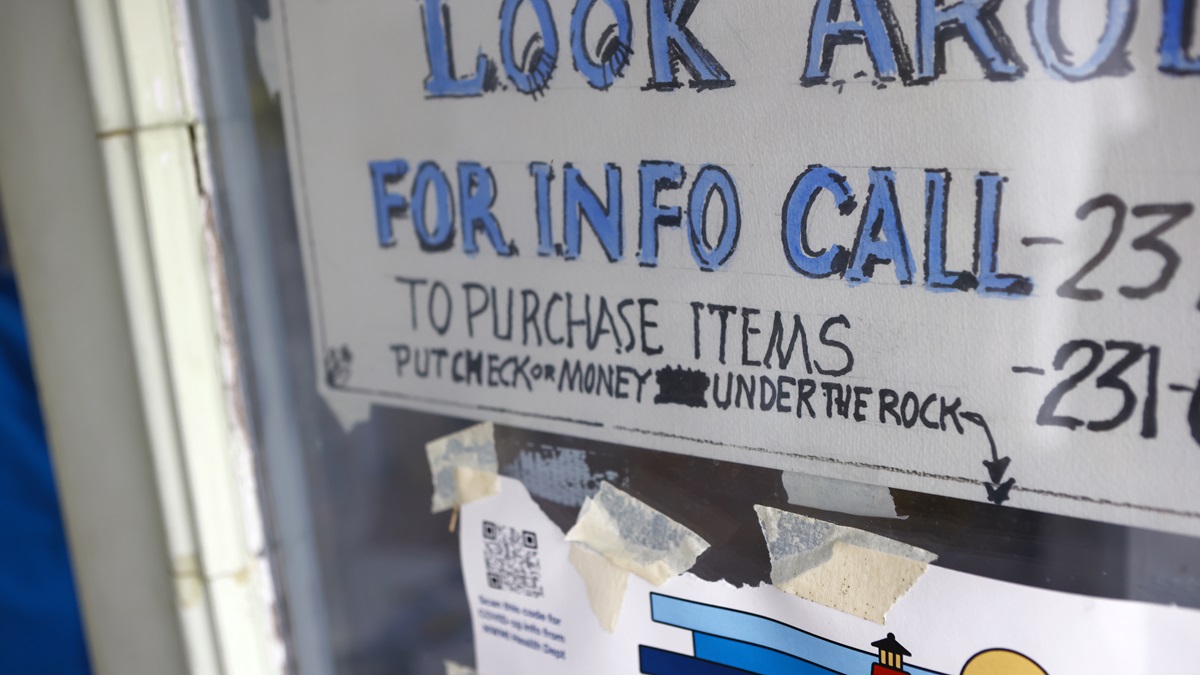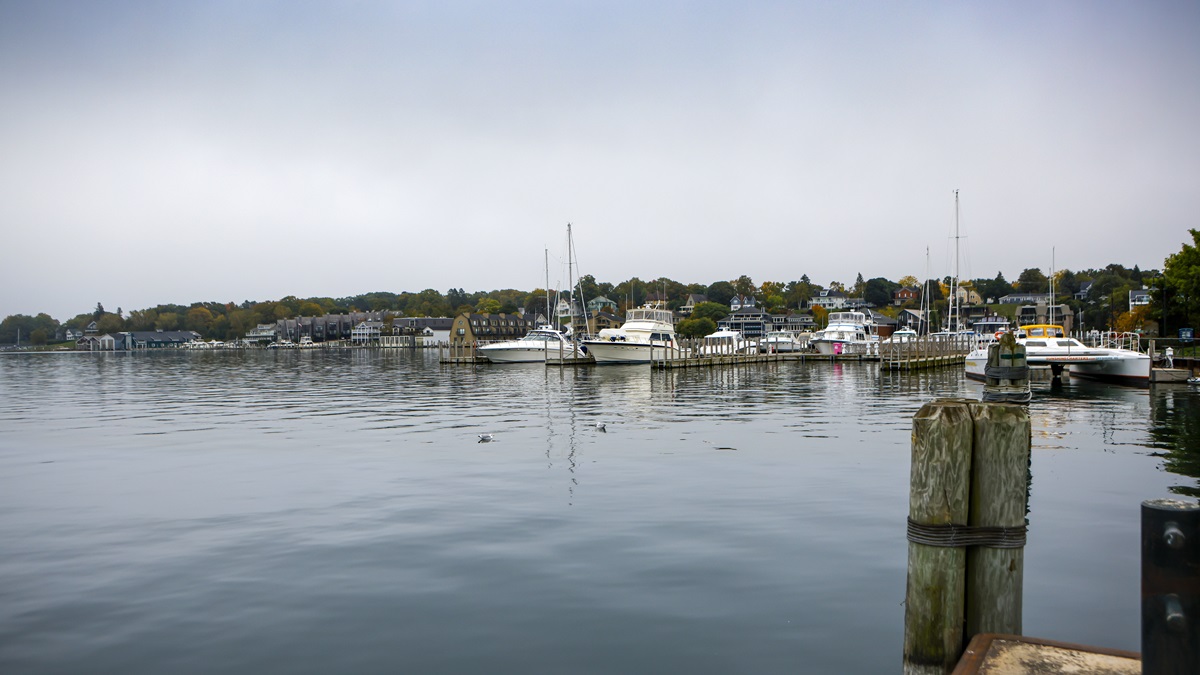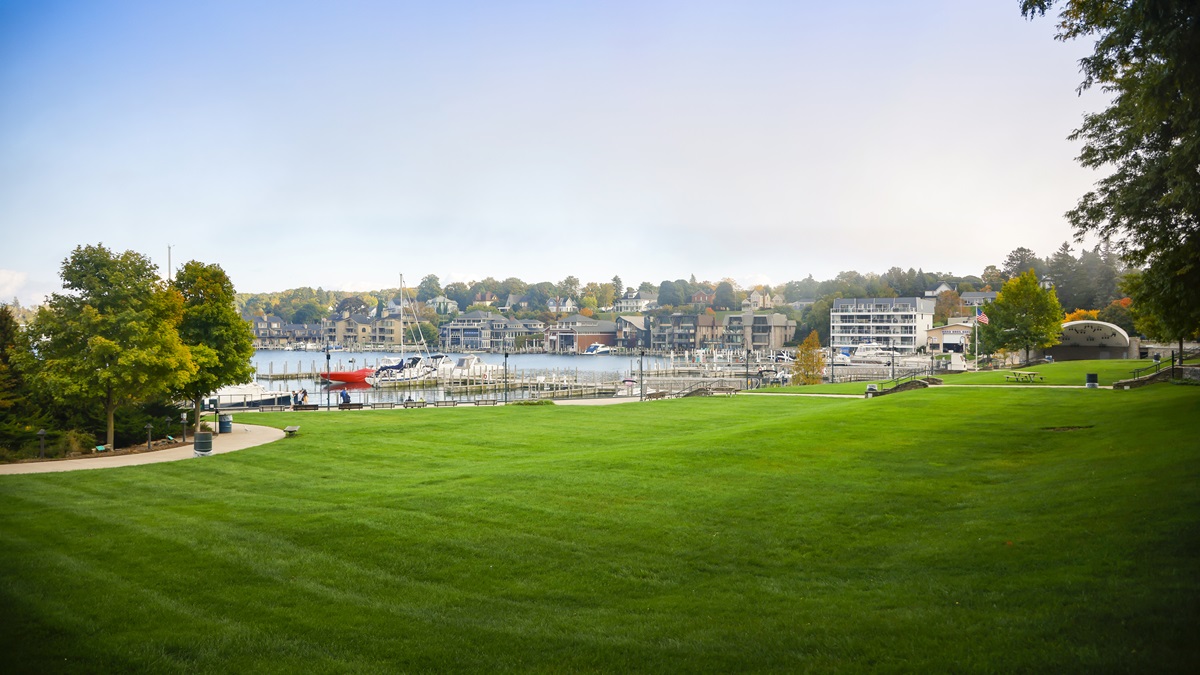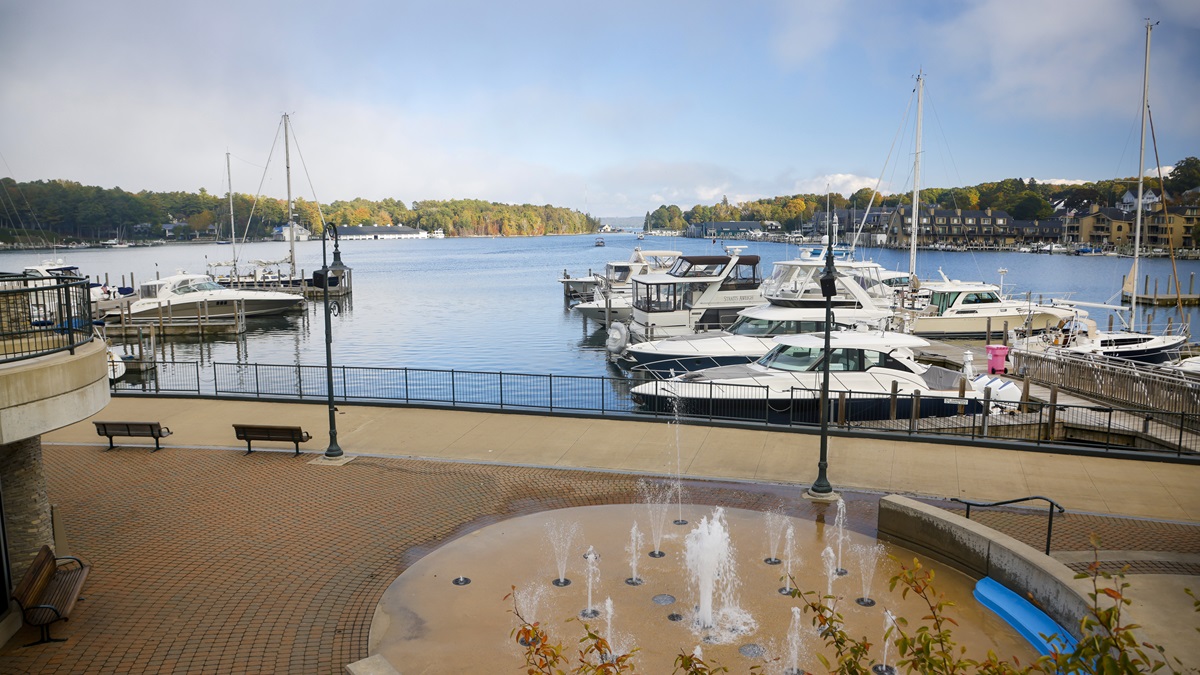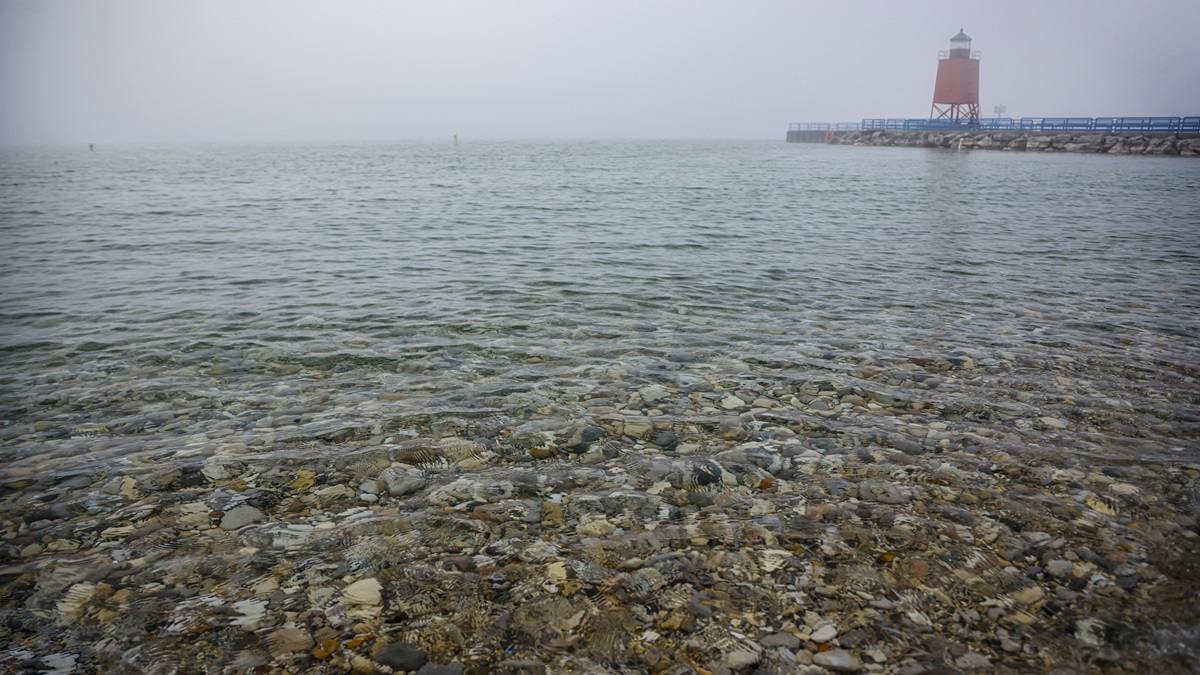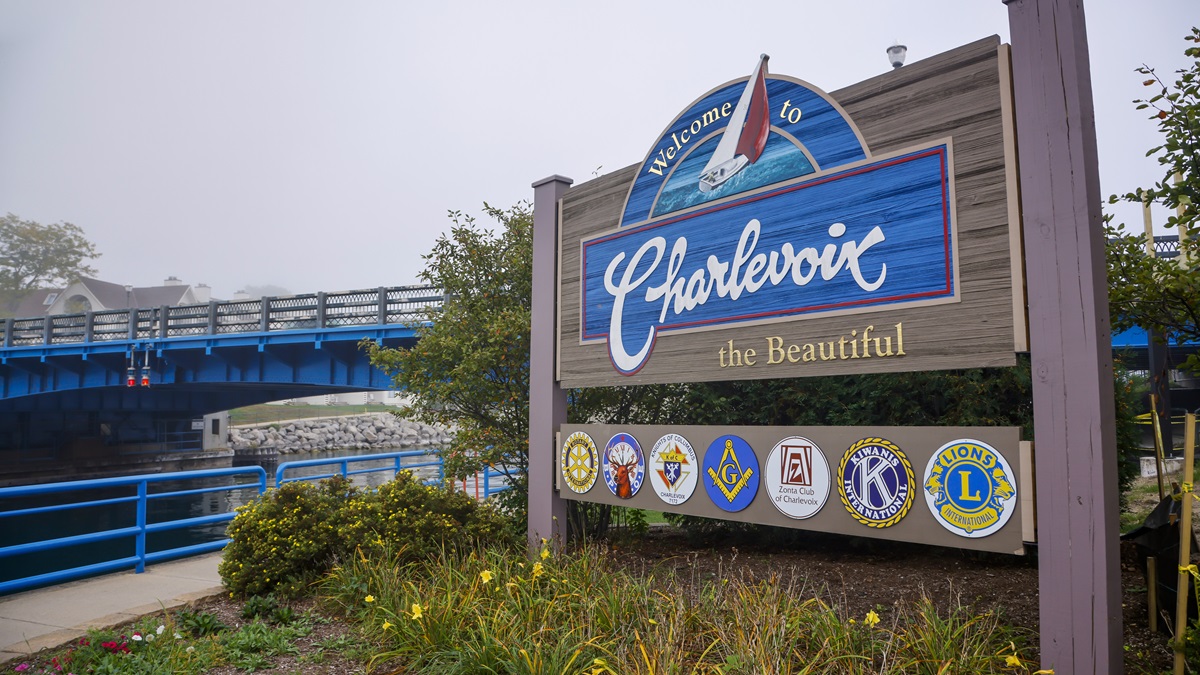Fall flying in northern Michigan
True blue happiness

And while the Great Lakes State may be more famous for its tart red cherries, on this trip, the bright orange pumpkins are taking center stage. It’s a fall-tastic day here in Traverse City and the hiking trails, the wineries, and the pumpkin patches beckon us.
First, welcome to Cherry Capital Airport (TVC). Originally the Traverse City Airport built in 1936 (replacing Ransom Field, an early airfield from the mid-1920s), this two-runway (7,016 feet and 5,378 feet) site is experiencing rapid growth. As one of only a few airports in northern Michigan to offer airline service, it’s becoming a locus for American, Delta, and United for connections throughout the region. But it retains its small-town charm and is welcoming to general aviation travelers. The Class D airspace has a little bit of everything flying here so be on your toes. Stop by the terminal building; its Frank Lloyd Wright-inspired design is reminiscent of a north woods lodge and you’ll get your first whiff of cherry-flavored coffee, which is really very good (be forewarned—there will be cherry flavors in just about every food/drink/chocolate you can name in this area, most good, some odd, and some sublimely ridiculous).
“As a hub for northern Michigan tourism, we are always thrilled to greet aviators to Traverse City,” said Margo Marks, general manager of Avflight, Cherry Capital Airport’s full-service FBO. “We’re unique in that we’re a four-season destination location, with something to attract travelers all year-round—but I have to say, autumn has a certain magic about it in Traverse City. The view is simply breathtaking, especially from the sky. Fly in soon—we’ll have a local coffee and some Moomers ice cream waiting for you!”
Rental cars are available, although on busy weekends throughout the year you’ll be challenged. Traverse City is truly a year-round spot with sailing and beach going in the summer, golf and wineries in the spring, skiing and snow sports in the winter, and this quintessential Currier and Ives study in autumn we are experiencing on our first trip here. While we can fly up the bay to a series of accessible GA airports (see “Nearby Airports” at right), a car expands your visit to the wineries, marinas, parks, and farms that dot the landscape.
Northern Michigan








Traverse City sits at the base of Grand Traverse Bay, an inlet of Lake Michigan, at 22,404 square miles, the third largest of the Great Lakes. There’s a West Grand Traverse Bay and an East. The so-called Miracle Mile of Traverse City is situated on East Grand Traverse Bay. The tongue-twister named Greilickville (Dutch settlers get the credit for some of the names in this area) is on West Grand Traverse Bay. Up through the center of these two inlet bays is Old Mission Peninsula, home to many of the nearly 140 wineries in this region.
There are many waterfront hotels and restaurants. We chose the Delamar Hotel on the west end of town, but doing it differently, I’d suggest some of the hotels and resorts outside the city (although being able to walk the Grandview Parkway into town was a nice experience). From the Delamar you look out across the bay, which is startlingly vast—a beautiful blue vista stretching northward—and offering a gorgeous pink and yellow sunset.
Driving up Old Mission Peninsula, let’s stop at Mari Vineyards. Besides offering a stunning view of the bay from an Italian chateau perched on a hillside, Mari Vineyards is owned by Marty Lagina of the television show The Curse of Oak Island. If you’re not familiar with the show, it’s about a millionaire who is convinced there’s treasure on an island off Nova Scotia. He’s been searching for nine years and found nothing. Some people will watch anything. The 100-percent estate wine (meaning the grapes are grown on site) is very good. The area is called the “Third Coast” because Lake Michigan tempers the air along the shoreline and protects the fall crops from early frosts. It is why most of Michigan’s wine grapes are grown within 25 miles of Lake Michigan.
Heading north
The original reason for our visit to northern Michigan was to visit Island Airways, a family owned air service, which serves remote Beaver Island from its FBO in Charlevoix (look for our story in an upcoming issue of AOPA Pilot magazine). On our way north to Charlevoix, the weather went south. Well, the fog rolled in. It did not come in “on little cat feet” as poet Carl Sandburg is credited as having written. Nope, this fog dumped right down and obliterated everything. One moment it was blue sky and the next moment it was Jack the Ripper London.
Because we could not now fly out to Beaver Island, it was recommended we stay at the Weathervane Terrace Inn, which will discount its rooms overnight if you can’t fly out of Charlevoix. The inn sits along the Pine River Channel and up the hill from the expansive area beaches, so it was deeply enveloped in the fog. The skies are usually so clear here that one sees shooting stars and often the northern lights.
“Prepare yourself for Caribbean-colored waters and super nice Midwestern people with really top-notch restaurants, wineries, and breweries to fit all budgets and palates.” —Dan Jonkoff, TVC-based pilotCharlevoix is famous for its mushroom houses. Architect Earl Young designed more than two dozen stone houses in Charlevoix that look like they belong in J.R.R. Tolkien’s The Lord of the Rings. With cedar shake sloping roofs, fieldstone and boulder walls, and landscaping that snuggles into hillsides, these charming little houses are restored and kept up by their owners; some are available as vacation rental properties. Young is also credited with the massive stone fireplace in the Weathervane, which features a nine-ton boulder as its mantelpiece.
The reason for the use of these distinctive boulders is limestone deposits broken up during the ice age. There are Charlevoix and Petoskey stones all over the beaches, which visitors comb the shoreline to collect and take home. The Wright brothers in Michigan?
More Attractions








Up the road from Charlevoix are the picturesque towns of Bay Harbor, Petoskey, and Harbor Springs. The land does a little bump in here, creating Little Traverse Bay and more expansive water views. The cobblestone streets of Petoskey’s Gaslight District offer more than 170 shops and restaurants. Of the many famous and wealthy people who have summered in Petoskey, Ernest Hemingway’s family who began summering here in 1900 is most revered. There are many markers at the writer’s favorite haunts including what is now the City Park Grill where a charming skeleton perches at the end of the bar in front of his typewriter, wearing a hat.
At the top of Petoskey’s hilly street and across from the City Park Grill is a green park replete with old-fashioned white painted gazebo. A surprising look across the green finds a familiar store front. The Wright brothers’ bicycle shop in downtown Petoskey? If you’ve seen the replica in Dayton, Ohio, or the remains of the original shop in Henry Ford’s Greenfield Village in Dearborn, Michigan, then you’ll be as surprised as we were to discover what looked like the storefront on the town green.
Dave Russell, a longtime Petoskey resident and owner of Dave’s Boot Shop in the Gaslight District, became enamored with the Wrights when he was a boy. He began collecting stuff that had to do with the famous brothers—from a collection of bicycles that will amaze you to books, letters, drawings, advertisements, and so much more (including an outhouse set up next door). He claims to have met Wright relatives, including an aunt. And he keeps his Wright memorabilia in a store he designed to look like the original Wright Brothers Bicycle Shop (including, as I said, an outhouse). But it is not open to the public. You must walk up the lane to East Lake Street (appears to be the main drag) to his shops(s)—there’s a rabbit warren of Dave’s Boot Shop, which flows into Russell’s Shoes, which merges into a Mercantile—and ask for Dave. From the basement a Geppetto-like man appears in his cobbler’s apron (although he and others will offer immediately that they no longer do shoe repair) and he beams, just beams, with joy that you want to see his Wright brothers’ shop/store/museum/whatever. There is no website, no business name. If you’d like to see this remarkable collection, you have to go to Petoskey…and ask for Dave.
And then there was this
If you keep looking for aviation-related sites when you’re traveling (and sometimes when you’re not really looking as in the case of Dave’s Shoes) you stumble on remarkable places that often the people in the area take for granted. While the pilots and airport managers we spoke with all along the upper coast of Lake Michigan certainly had great things to say about flying the area—the Caribbean-blue waters, incredible views of places such as Sleeping Bear Dunes and the great Mackinac Bridge, approaches that burst out over the water, and quiet island airports like Welke Airport on Beaver Island—we found Woolsey Memorial Airport (5D5) at the very tip of the Leelanau Peninsula, five miles north of the village of Northport. Named for Clinton F. Woolsey, a pilot in World War I and flight instructor to Charles A. Lindbergh (yep, that guy), this grass field sits on 80 acres of land at the end of the peninsula, as if the last takeoff spot on Earth. Woolsey died in a crash during the Pan-American Goodwill Flight in 1927. His heartbroken father gave the 80 acres, a barn, and milk house to Leelanau Township. The former creamery and milk house that the Works Progress Administration remade into a terminal sits on the side of the lonely road, a bronze plaque placed on a large boulder honors Capt. Woolsey. Woolsey Airport was dedicated in 1935. Today it appeared abandoned, but each year there’s a Fly-In/Drive-In breakfast here with vintage airplanes and cars, presented by the local Lions Club. We want to go back.

